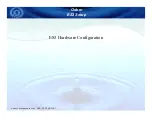
Safety
4:3
CP 1–Cathodic Protection Technician Course Manual
©
NACE International, 2000
12/01/04
touching the case, either measure a case-to-ground voltage or use an
instrument that detects AC voltage by a light that comes on when placed in
close proximity. Do not touch the rectifier case while testing or in the first
test do not extend your arms to bridge between the case and the ground
probe. The case-to-ground voltage should be virtually 0 Volts
AC
.
Remember it is the current through your body that kills. The values of
current vary between the person and the length of exposure. The threshold
of perception is generally agreed to be 1 mA. A current of 9 to 25 mA can
cause lack of muscular control (let-go current) that makes it impossible to
release and in fact it may cause the muscles to tighten
1
. Research indicates
the maximum safe current between an arm and a leg is 100 mA at 3
seconds
2
. At a greater current, death may occur due to ventricular
fibrillation of the heart.
Example:
If a person’s resistance is 1000
Ω
and contact is made with 120 V
AC
then,
using Ohm’s Law (I=E/R), the current through the body is 120 mA, likely
enough to be fatal. Note that rectifiers may be serviced with 240 V
AC
, 480
V
AC
or up to 600 Volts
AC
thus the body current would increase
proportionally.
Cathodic Protection (CP) Rectifiers
•
CP rectifiers have exposed electrical AC and DC terminals on the
panel of the rectifier. The voltage exposure varies with the rectifier
rating and design. Do not make body contact with any electrical
terminal when the rectifier is energized and protect yourself from
this hazard.
•
Take measurements with insulated meter probes intended for that
purpose using a one-hand method while avoiding contact to the
probe end. Never press a probe end and a terminal or wire between
your fingers to make a contact.
•
Turning off the circuit breaker in the rectifier will render the front of
the panel safe but will not make the back or inside of the rectifier
safe!
•
The AC disconnect outside the rectifier must be OFF (locked
out/tagged out) before the entire rectifier is safe to work on.
1
IEEE Std. 80, IEEE Guide for Safety in Substation Grounding, Institute of Electrical and Electronics
Engineers
2
L.P. Ferris, B.G. King, P.W. Spence, H.B. Williams, Effect of Electric Shock on the Heart, AIEE Trans.,
Vol. 55, pages 468-515 & 1263 May 1936 and IEEE Std 80.
Summary of Contents for CP 1
Page 1: ...CP 1 Cathodic Protection Tester Course Manual February 2005 NACE International 2000 ...
Page 265: ......
Page 266: ......
Page 267: ......
Page 268: ......
Page 301: ...RP0169 2002 32 NACE International ISBN 1 57590 035 1 ...
Page 535: ...TM0101 2001 24 NACE International ISBN 1 57590 137 4 ...
















































